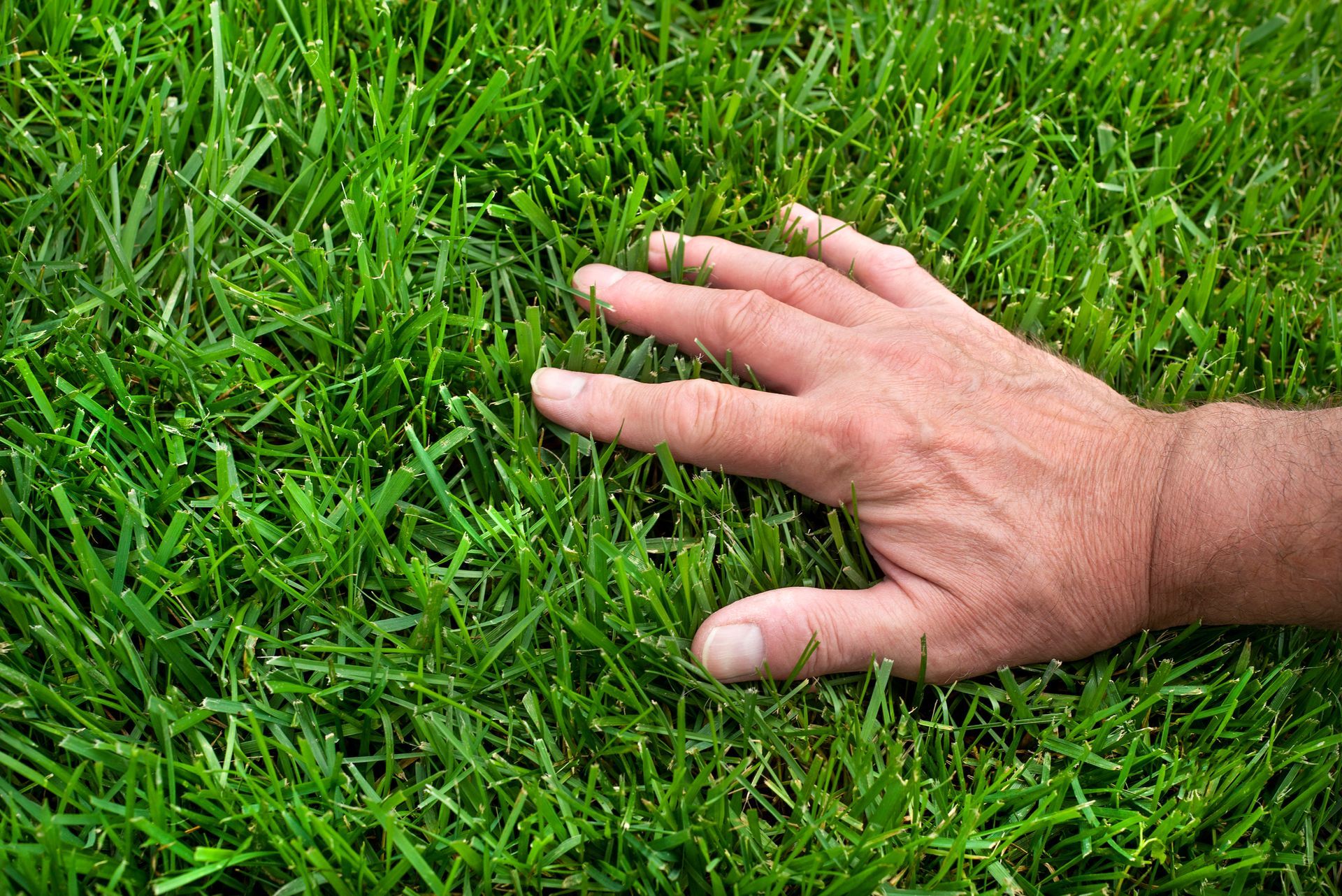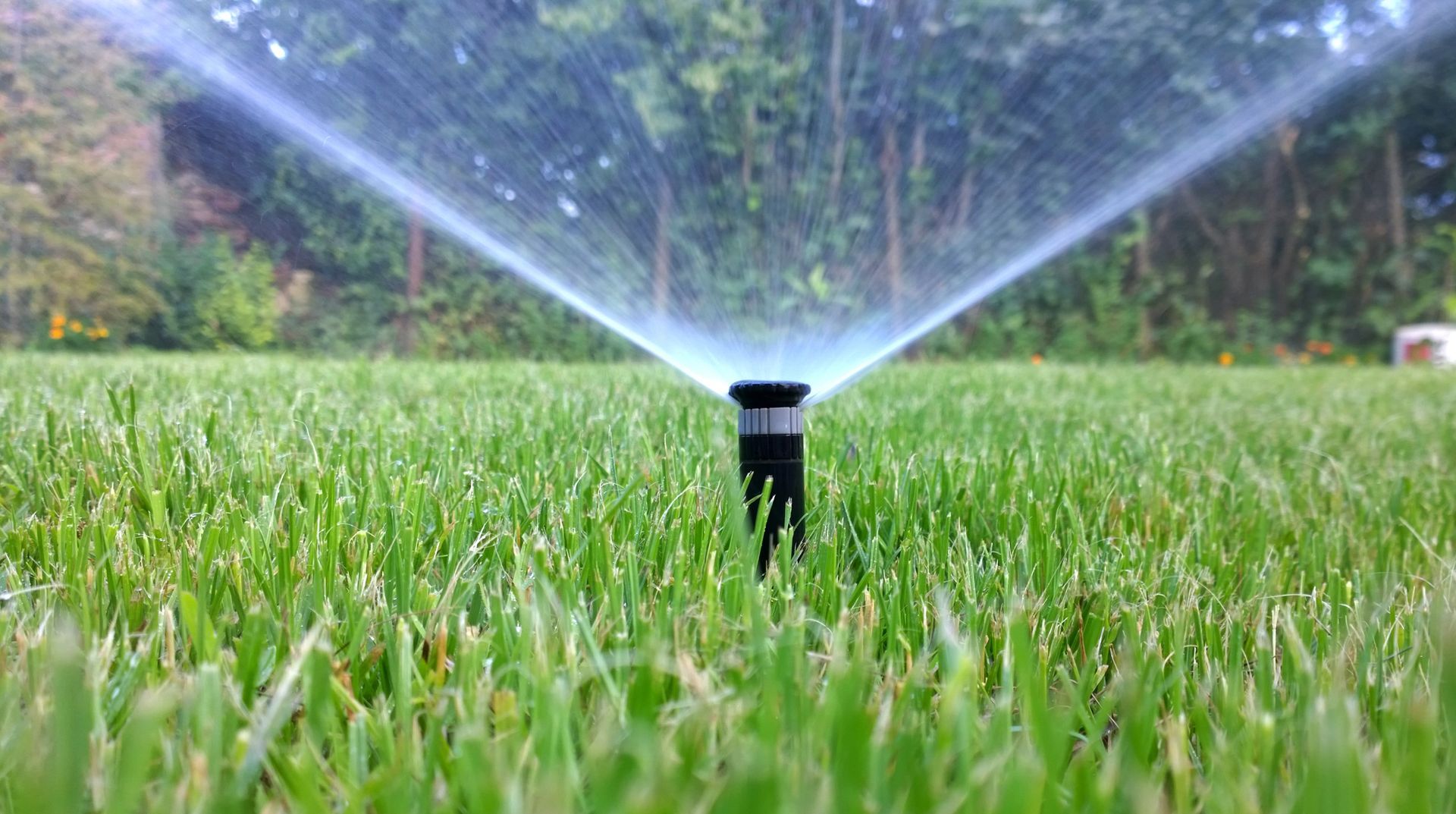
While the grass might be greener on the other side, it might not be healthier. Especially if it’s addicted to nitrogen. Need an intervention? Here are three keys to help you achieve better lawn balance and beauty. 1. Soil Perhaps the single most important factor in the health of your lawn is the underlying soil health. In addition to the presence and availability of macronutrients—namely nitrogen, phosphorous and potassium—drainage, compaction, pH levels and the organic soil community all contribute to the overall health of your lawn’s soil. Depending on many factors—including soil composition and the particular grass cultivar(s) that make up your lawn—little or no intervention may be required to maintain good soil health. Leaving grass clippings after mowing can be an easy way to replenish the soil with needed nutrients. On the other hand, things like overfertilizing, and especially so with synthetic fertilizers, can quickly upset the balance. 2. Water In general, grass needs just an inch of water each week to thrive. Spring rains in the Cleveland area are usually more than enough for a healthy lawn. In fact, too much water can lead to stunted roots and reduced drought tolerance during later dry spells. When the rain slows down and your yard could use a little extra water, it’s best to water in the morning. Afternoon watering isn’t ideal because more water will evaporate before it reaches your grass’ roots, and watering in the evening or at night invites rot and fungus. When you do water, be sure to water enough to saturate deep beneath the surface. Just as overwatering discourages healthy root growth, shallow watering creates a shallow root system, and ultimately a weaker, undernourished lawn. Watering up to 2 - 3 times per week for about 30 minutes each session will help to cultivate a healthy root system. 3. Maintenance Before the first mow of the season, inspect your lawn mower and complete any necessary maintenance. Don’t forget to check the blade: a dull mower tears grass, making it vulnerable to disease. The height setting on your mower should be considered too, as mowing grass too short exposes the soil underneath to sunlight, encouraging weed seeds to germinate—typically, you'll want to cut at no less than three inches, especially in preparation for the summer heat. Ideally, only the top third of the grass blade should be removed each time it’s cut. This encourages a deeper, stronger root system. While there’s more to know, this brief can keep or set you on the road to greener suburban pastures. We believe that grass is awesome and worth our efforts to help it thrive. And before you know it, with a little smart and thoughtful care, yours will be the proverbial lawn that is on the other side of everywhere—from the inside out!

As we move from spring to summer, it’s the time of year to get the most out of our outdoor spaces. But for those plagued by lawn weeds, this season might be less of a treat and more of a headache. If you’re noticing unwanted weeds cropping up in your yard, it may be tempting to reach straight for the weed killer—but sometimes chemicals can cause more problems than they solve. Different herbicides work differently: some poison the soil, preventing even wanted plants or grass from growing there; others can harm helpful insect communities that work to keep your lawn healthy. Many options render the space unsafe for little ones and pets, not to mention the wider environmental impact these can have. Simply keeping up with good lawn care goes a long way to help grass thrive and discourage weed growth. Small adjustments to amount and regularity of fertilizer and watering or mowing height and frequency can all impact a lawn’s resilience against weeds. The healthier your grass, the less susceptible it will be to invasion, successfully fending for itself against the occasional rogue sprout. But perhaps you notice an unwanted plant that’s especially tenacious, or an area where weeds are gaining ground over your grass. In this case, it’s important to correctly identify the weed to effectively control it. Depending on the nature of the problem, manual removal may be a viable option. If you determine that chemical application is necessary, be informed about product choices and how environmental conditions may affect the treatment. And of course, always follow application instructions carefully.

During our hot and humid Ohio summers, our lawns are likely to face some challenges. While we may be quick to assume that brown grass just needs more water, that isn’t always the case. In fact, depending on the root cause, those well-intentioned but misguided solutions may exacerbate the problem even further. Let’s look at two of the most common lawn diseases in our area as a case in point: dollar spot and brown patch. Both are fungal infections that cause grass to turn brown or tan and tend to occur in the summer. But there are some key differences. Dollar spot tends to occur when the soil is too dry and grass blades stay wet for an extended period, whether from rain, dew or a sprinkler. While watering can be helpful in preventing dollar spot, limiting it to the morning will allow plenty of time during the hot part of the day for excess water to dry. Ensuring that your grass is getting enough water to its roots and the proper amount of nitrogen can both fend off dollar spot and minimize damage if it does take hold. Brown patch on the other hand tends to occur during hot, humid periods when the soil is too wet. For this reason, brown patch calls for little or no watering. While brown patch is like dollar spot in that wet foliage should be avoided, adding nitrogen to a yard affected by brown patch can actually spur on growth of the fungus and worsen an infection. But sometimes those brown patches aren’t caused by lack of water or disease. Damage from lawn pests can also be tricky to diagnose, but correct identification is key to successfully managing an infestation. Taking note of when in the season the damage begins to show, how quickly it affects your grass, and the nature of the damage itself can all help narrow down the culprit. There are many possibilities, but especially in mid-to-late summer two of the most common lawn pests in the Cleveland area are white grubs and chinch bugs. While each feed on a different part of the plant, overall damage can look similar: irregular patches of brown dead or dying grass. So how can we differentiate? White grubs tend to start feeding in late August and damage can occur rapidly. A tell-tale sign of grub activity occurs when affected grass can be lifted all at once from the soil, much like a carpet. Because grubs feed on the roots of grass, the affected blades are easily detached from the soil. And since these grubs are off-white in color and about an inch long, you’re likely to quickly spot them underneath in their distinctive c-shaped curve. Chinch bugs are typically active throughout the summer, from June to September. Chinch bugs pierce grass blades to suck sap from them, leaving behind a substance that prevents the plant from moving water from roots to blade. The result is dehydrated grass that withers and dies quickly. This can look like damage from grubs but will leave the affected grass blades rooted. These are just a sampling of some of the possible reasons your lawn may start to brown this summer. Whatever the case, identifying the cause is key to successfully mitigating any damage. The resources below can be helpful in recognizing the four most common causes discussed in this article. But if you’re still not sure, or you just want an expert’s eyes on it, contact your local lawncare professionals to get some clarity, along with treatment options and recommended next steps. Resources Dollar Spot on Turfgrass Brown Patch on Turfgrass White Grub Control in Lawns Chinch Bugs in Turfgrass
You Can Count on Us for Quality Landscaping or Hardscaping Services
Call 440-838-8875 to get started.


